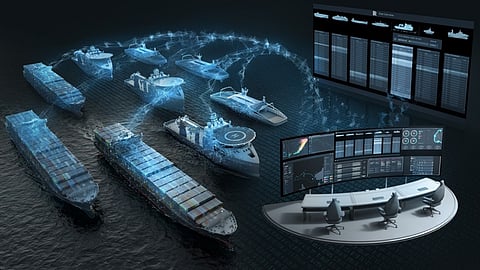The New Wave: How Technology and Sustainability are Transforming Container Shipping
Container shipping powers the global economy, carrying over 90% of the world’s traded goods across oceans. For decades, these massive vessels have quietly connected continents, moving everything from food and clothing to electronics and automobiles.
But as climate change concerns escalate and digital technologies advance, this traditionally conservative industry is being compelled to modernize.
Today, container shipping stands at a crucial crossroads — embracing smart technologies, automation, and green innovations to enhance efficiency and cut emissions. Let’s explore how new-age tech and sustainable practices are reshaping this vital maritime sector.
Smart Containers: The Rise of Real-Time Visibility
Gone are the days when a container’s location was only known at the port of departure and arrival. The advent of smart containers equipped with IoT (Internet of Things) sensors now offers end-to-end, real-time visibility of cargo in transit.
Smart containers have features like:
Temperature and humidity monitoring
GPS-based tracking
Shock and tilt detection
Door-opening alerts
These are enhancing cargo safety, reducing losses, and improving supply chain transparency while not only minimizes wastage - particularly for perishable goods - but also optimizes routes and delivery schedules, indirectly lowering carbon footprints.
Autonomous Vessels and AI-Powered Navigation
Maritime giants and tech firms are developing autonomous container ships capable of navigating without human intervention. These vessels leverage artificial intelligence, machine learning, and advanced sensors to optimize routing, speed, and fuel consumption while reducing the risk of human error.
For example, Norway’s Yara Birkeland, the world’s first zero-emission autonomous container ship, marks a significant milestone in this direction.
AI-powered route optimization systems are also helping conventional container vessels avoid rough weather, congested shipping lanes, and idle time at ports — leading to reduced fuel consumption and emissions.
Green Propulsion Technologies: Beyond Fossil Fuels
Container shipping has traditionally relied on heavy fuel oil, a major pollutant. In response to IMO’s ambitious decarbonization targets, shipowners are now investing in alternative propulsion methods such as:
Liquefied Natural Gas (LNG): Emits fewer pollutants than diesel but still faces sustainability scrutiny.
Methanol and Biofuels: Renewable and increasingly viable, with shipping lines like Maersk already placing orders for methanol-fueled ships.
Hydrogen and Ammonia: Seen as the fuels of the future, producing zero carbon emissions when used.
Electric and Hybrid Engines: Especially for short-sea and feeder container vessels.
These new fuel technologies are supported by energy-saving devices like air lubrication systems, wind-assist sails, and rotor sails, which cut fuel use and emissions.
Green Ports and Shore Power Systems
Sustainability efforts are extending to ports, where ships traditionally burn fuel while docked. The deployment of shore-to-ship power (cold ironing) allows vessels to plug into the local electrical grid, cutting emissions during cargo handling.
Smart, green ports also feature:
Automated container terminals
AI-assisted crane operations
Electric cargo-handling vehicles
Digital twin simulations for efficient berth and yard management
This not only reduces turnaround time but significantly curbs port-related air pollution.
Blockchain and Digital Documentation
Paper-heavy processes have long slowed down global container shipping. Now, blockchain technology and e-documentation platforms are streamlining customs clearances, bills of lading, and cargo tracking, minimizing fraud, delays, and administrative costs.
Faster cargo movement and reduced paperwork translate into lower emissions from idling vessels and trucks waiting for clearances.
Sustainable Ship Recycling and Eco-Friendly Materials
As older ships are phased out, there’s growing emphasis on responsible shipbreaking and recycling practices, especially in South Asian yards. The use of eco-friendly construction materials, recyclable coatings, and modular ship designs is also gaining momentum, furthering the industry’s green credentials.
Outlook: Charting a Sustainable, Tech-Driven Future
The container shipping industry is undergoing a dramatic transformation, driven by digital innovation, automation, and a growing environmental conscience. Smart containers, AI-assisted navigation, alternative fuels, and blockchain are no longer futuristic ideas but operational realities shaping the maritime world.
While challenges like cost, regulatory complexities, and infrastructure gaps persist, the momentum for change is undeniable.
With collaboration across governments, shipping lines, ports, and technology providers, container shipping is poised to evolve into a greener, safer, and smarter industry — steering global trade into a sustainable new era.
Read More: Sailing Through Time: How Traditional Supply Chains Still Anchor the World Economy


